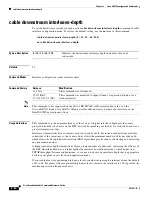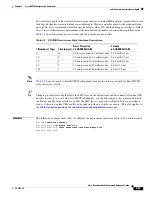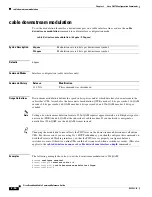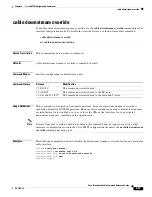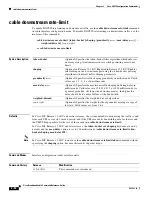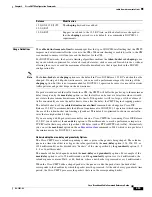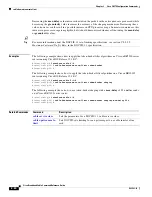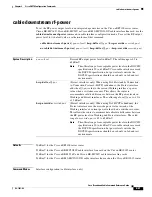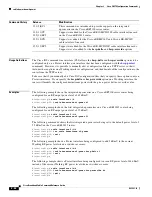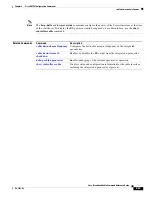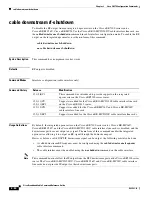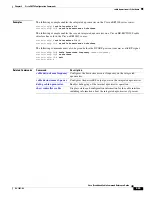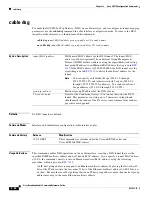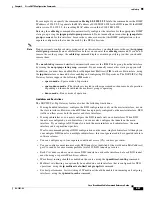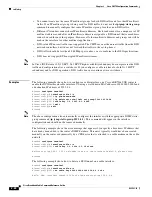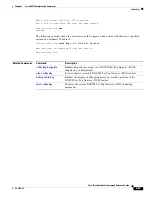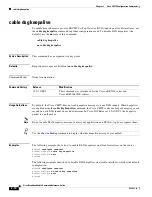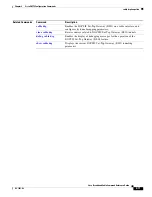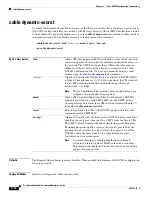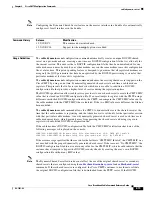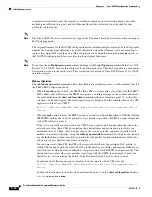
2-59
Cisco Broadband Cable Command Reference Guide
OL-1581-08
Chapter 2 Cisco CMTS Configuration Commands
cable downstream rate-limit
Usage Guidelines
The
cable downstream rate-limit
command specifies the type of DOCSIS rate limiting that the CMTS
imposes on downstream traffic that is sent to the CMs. When rate-limiting is enabled, traffic to the CM
is examined to ensure it will not exceed the limit set for the CM.
For DOCSIS networks, the best rate limiting algorithm combines the
token-bucket
and
shaping
to use
keywords, which is optimized for relatively steady data rates, such as are used for web browser, without
allowing the user to exceed the maximum allowable download rate that is specified in the DOCSIS
configuration file.
Note
The
token-bucket
and
shaping
options are the default in Cisco IOS Release 12.2 BC and should not be
changed. If using a 64 kbps downstream rate, you can avoid a performance impact by turning off the
shaping
option, but this is not recommended for DOCSIS 1.1 operation because it can result in erratic
traffic patterns and packet drops on the downstream.
If a packet would exceed the traffic limits for a CM, the CMTS will buffer the packet, up to the maximum
delay time given by the
max-delay
option, so that the traffic can be sent at a later time when it would
not violate the maximum downstream traffic limits. If the packet is still too large, or if the volume of
traffic consistently exceeds the traffic limits, even after the delay, the CMTS begins dropping packets.
The default behavior of the
cable downstream rate-limit
command was changed in Cisco IOS
Release 12.2 BC to accommodate the different requirements of DOCSIS 1.1 operation (which requires
the use of the token-bucket rate-limiting algorithm). This default is optimized for downstream traffic
rates that are higher than 84 kbps.
If you are using a 64 kbps downstream traffic rate on a Cisco CMTS that is running Cisco IOS Release
12.2 BC, you should set the
max-delay
option to 256 milliseconds to avoid a performance impact on
TCP/IP traffic that uses packets larger than 1024 bytes (such as FTP or HTTP web traffic). Alternatively,
you can set the
max-burst
option on the
cable service class
command to 3044, which is two packets of
the minimum size for DOCSIS 1.1 networks.
Understanding the max-delay and granularity Options
The Cisco CMTS uses a calendar--queuing system to process the packets being shaped. The calendar
queue is a time wheel that is as big as the value specified by the
max-delay
option (128, 256, 512, or
1028 milliseconds), and is divided into “buckets” of the size specified by the
granularity
option (1, 2,
4, 8, or 16 milliseconds).
The number of buckets depends on both the
max-delay
and
granularity
options. For example, if the
max-delay
option is set to 256 milliseconds, and the
granularity
option is set to 4 milliseconds, the
calendar queue contains 256/4, or 64, buckets, where a new bucket is processed every 4 milliseconds.
When the Cisco CMTS adds a shaped packet to the queue, it adds the packet into the bucket that
corresponds to the deadline by which the packet must be processed. At the end of every granularity time
period, the Cisco CMTS processes the packets that are in the corresponding bucket.
12.0(4)XI, 12.0(5)T1,
12.1(1)EC1
The
shaping
keyword was added.
12.2(4)BC1
Support was added to the 12.2 BC train, and the defaults were changed so
that the
shaping
keyword is on by default, to accommodate DOCSIS 1.1
requirements.
Release
Modification










